
The immune system- The Digestive process.
There is an old saying ‘You are what you eat‘ which came originally from the French Anthelme Brillat-Savarin author wrote, in Physiologie du Gout, ou Meditations de Gastronomie Transcendante, 1826: “Dis-moi ce que tu manges, je te dirai ce que tu es.” (Tell me what you eat and I will tell you what you are.) A time when gout was a huge problem for those who indulged in rich foods….thanks to Phrases.org.uk
I thought I would take this concept a little further by demonstrating the actions that take place following the consumption of food… and since most of us who eat meat, will indulge in a chicken sandwich regularly, I have selected this to be the test subject.
I wanted to describe the passage of a very common and tasty snack that many of us enjoy. Usually with only one thing in mind. The taste.. However, perhaps after following this chicken sandwich through your digestive tract you might think about it in a different way.
As a starter – a bit about Antibiotics.
Firstly, though a little about antibiotics. Most of the stories in the media are about the concerns of scientists and doctors that we are fast running out of effective antibiotics to kill the many strains of bacteria that threaten our health.
If human DNA only mutates every 10,000 years or so, they are outstripped by ‘Formula 1‘ bacteria. They are mutating in a heartbeat to survive and this is where the problem lies with antibiotics. We have over prescribed them in the last 50 years or so, pumped them through the food chain resulting in damage to our immune systems and we have created a group of superbugs that don’t care what you throw at them.
Our immune system is our own personal health insurance and we need to make sure that it is boosted so that it can handle the minor bacterial infections we will all have from time to time and only have antibiotics if our system cannot overcome the problem itself.
The purpose of this post is to illustrate how the food that we put in our mouths is critical to the efficiency of our Immune System. Without the right ingredients that have to be processed at every stage of digestion, there would be no defense mechanism in place and we would die. Therefore you really need to think of these two major operating systems of the body as working in tandem.
Our body is pretty amazing but it is not a magician. You do not eat a meal and are suddenly flooded with vitamins and minerals. It is necessary for the food to go through a complex process before its nutrients can be utilised to combat bacteria and provide us with energy.
For that task we need enzymes and other ingredients produced by our organs. For the purpose of this post I am going to use a sandwich that many of us might eat and then forget about. What happens to it after the juicy chicken and tangy mayo has left our mouth is not our concern surely? But it is!
One of the most complex systems in our body is already at work having begun the process the moment you started to chew the first mouthful of the sandwich.
The journey of the chicken sandwich from first bite to fuelling your immune system.
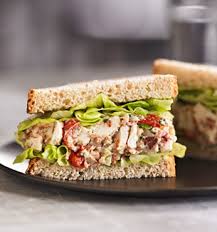 You take your first bite of a wholegrain sandwich with chicken and salad, a bit of butter and a smidgen salt and mayonnaise (lovely)- in the meantime your teeth, tongue and salivary glands that produce the first phase of enzymes begin the digestive process before passing the food (properly chewed is helpful) into the pharynx at the back of the throat. For example amylase produced by the salivary glands converts the bread in the sandwich into pairs of sugars, or dissacharides.
You take your first bite of a wholegrain sandwich with chicken and salad, a bit of butter and a smidgen salt and mayonnaise (lovely)- in the meantime your teeth, tongue and salivary glands that produce the first phase of enzymes begin the digestive process before passing the food (properly chewed is helpful) into the pharynx at the back of the throat. For example amylase produced by the salivary glands converts the bread in the sandwich into pairs of sugars, or dissacharides.
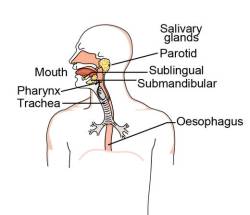 The food then passes into the oesophagus through to the stomach where hydrochloric acid modifies pepsinogen, secreted by the stomach lining to form an enzyme called pepsin. Pepsin breaks down the chicken into smaller units called polypeptides and lipase will break down any fatty globules into glycerol and fatty acids. The acid in the stomach will also kill as much harmful bacteria as possible (not only in the food itself but passed on from the hands that made it and the board it was made on). The end result is a highly acidic liquid that is passed into the duodenum.
The food then passes into the oesophagus through to the stomach where hydrochloric acid modifies pepsinogen, secreted by the stomach lining to form an enzyme called pepsin. Pepsin breaks down the chicken into smaller units called polypeptides and lipase will break down any fatty globules into glycerol and fatty acids. The acid in the stomach will also kill as much harmful bacteria as possible (not only in the food itself but passed on from the hands that made it and the board it was made on). The end result is a highly acidic liquid that is passed into the duodenum.
 The duodenum will secrete a mucus in response to two hormones (secretin and pancreozymin) that are released to neutralise the acidic liquid that was your chicken sandwich. Bile is also passed into the duodenum either directly from the liver or from the gallbladder where it has been stored.
The duodenum will secrete a mucus in response to two hormones (secretin and pancreozymin) that are released to neutralise the acidic liquid that was your chicken sandwich. Bile is also passed into the duodenum either directly from the liver or from the gallbladder where it has been stored.
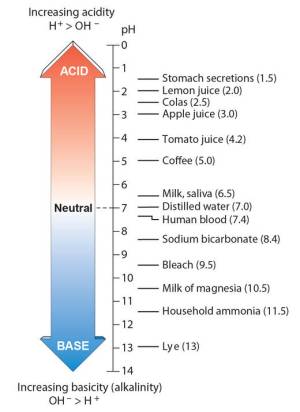 Bile is a complex fluid containing water, electrolytes and organic molecules including bile acids, cholesterol, phospholipids and bilirubin essential for the digestion of fats and their absorption along with fat-soluble vitamins as they pass through the small intestine. The bile has also picked up the waste products that have been accumulating in the liver so that they can be passed through the colon for elimination.
Bile is a complex fluid containing water, electrolytes and organic molecules including bile acids, cholesterol, phospholipids and bilirubin essential for the digestion of fats and their absorption along with fat-soluble vitamins as they pass through the small intestine. The bile has also picked up the waste products that have been accumulating in the liver so that they can be passed through the colon for elimination.
Referring back to my cholesterol blogs –Health Column Directory this is when total levels are affected by the efficiency of the bile process. Cholesterol not only comes from food but is also manufactured in the liver. It is virtually insoluble in most fluids except for bile where the acids and fats such as lecithin do the job. If this process is not effective cholesterol can collect into stones that block the ducts and cause problems with the digestion of fat. Bile levels in the body are lowest after fasting which is why you have a cholesterol test at least 12 hours after your last meal.
 By the time the liquid sandwich reaches the duodenum the particles within it are already very small, however they need to be smaller still before they pass into the ileum, where the final chemical processing will take place. The enzymes that have joined the mix from the pancreas and amylase will break down the food even further into peptides and maltose which is a disaccharide sugar.7. The small intestine is lined by millions of villi, tiny hair like projections which each contain a capillary and a tiny branch of the lymphatic system called a lacteal. More enzymes maltase, sucrase and lactase are produced to facilitate the absorption of the smaller particles through the villi – including breaking down the sugar pairs into single sugars called monosaccharides which pass through easily.
By the time the liquid sandwich reaches the duodenum the particles within it are already very small, however they need to be smaller still before they pass into the ileum, where the final chemical processing will take place. The enzymes that have joined the mix from the pancreas and amylase will break down the food even further into peptides and maltose which is a disaccharide sugar.7. The small intestine is lined by millions of villi, tiny hair like projections which each contain a capillary and a tiny branch of the lymphatic system called a lacteal. More enzymes maltase, sucrase and lactase are produced to facilitate the absorption of the smaller particles through the villi – including breaking down the sugar pairs into single sugars called monosaccharides which pass through easily.
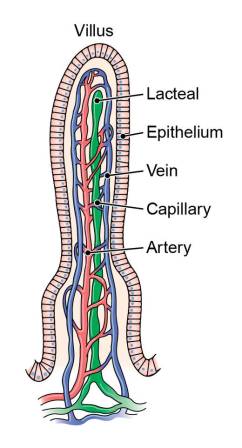
The glycerol, fatty acids and the now dissolved vitamins are sucked up into the lymphatic system through the lacteal and into the bloodstream. Other nutrients such as amino acids, sugars and minerals are absorbed into the capillary in the villi which connects directly to the hepatic portal vein and the liver. It is here, in the liver that certain nutrients will be extracted and stored for later use whilst others are passed onto the body.
The carbohydrate in the sandwich we have eaten has been broken down into first pairs of sugars and then into single sugar molecules and have passed through the villi into the liver. Glucose provides our energy and the liver will determine current levels in our system, how much glucose to convert to glycogen to store and how much to release directly into the bloodstream, as long term imbalance can cause diabetes.
Once all the nutrients have been extracted and passed into the bloodstream, lymphatic system or liver, any insoluble and undigested food moves into the large intestine. Any water and salt remaining in the mixture is absorbed into the lining of the intestine and the remainder mixes with all the other waste products produced by the body such as bacteria and dead cells – it is then pack and pressed and stored for excretion.
So there goes the last of your chicken sandwich. I hope it puts a different perspective on the food that you are putting into your mouth – it also is important to remember that if you have a white diet, white grains, fats and sugars lacking in sufficient healthy fats, vegetables and fruits, you are giving your body a great deal less to work with, and your body and immune system will struggle to get what it needs to be healthy.
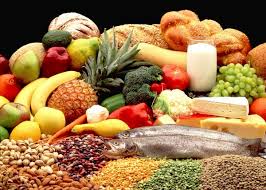 The only foods that provide our digestive system with the raw ingredients to maintain and boost our immune systems are natural, unprocessed vegetables, fruit, protein, wholegrain carbohydrates and healthy fats. This does not mean that you cannot eat white flour products, for example sourdough bread because of the live nature of the fermentation process is a healthier alternative to store bought plastic cheap white bread.
The only foods that provide our digestive system with the raw ingredients to maintain and boost our immune systems are natural, unprocessed vegetables, fruit, protein, wholegrain carbohydrates and healthy fats. This does not mean that you cannot eat white flour products, for example sourdough bread because of the live nature of the fermentation process is a healthier alternative to store bought plastic cheap white bread.
If 80% of the time you are consuming these foods cooked from scratch then 20% of the time eating foods that have are not as healthy is not a problem.
Most of us have access to an amazing variety of fresh foods but stay firmly fixed on a handful. We need a really wide variety of food to obtain all the nutrients we need for our immune system and this shopping list might help you out.
©Just Food for Health 1998 – 2019
My nutritional background
 I am a qualified nutritional therapist with twenty years experience working with clients in Ireland and the UK as well as being a health consultant on radio in Spain. Although I write a lot of fiction, I actually wrote my first two books on health, the first one, Size Matters, a weight loss programme 20 years ago, based on my own weight loss of 154lbs. My first clinic was in Ireland, the Cronin Diet Advisory Centre and my second book, Just Food for Health was written as my client’s workbook. Since then I have written a men’s health manual, and anti-aging programme, articles for magazines and posts here on Smorgasbord.
I am a qualified nutritional therapist with twenty years experience working with clients in Ireland and the UK as well as being a health consultant on radio in Spain. Although I write a lot of fiction, I actually wrote my first two books on health, the first one, Size Matters, a weight loss programme 20 years ago, based on my own weight loss of 154lbs. My first clinic was in Ireland, the Cronin Diet Advisory Centre and my second book, Just Food for Health was written as my client’s workbook. Since then I have written a men’s health manual, and anti-aging programme, articles for magazines and posts here on Smorgasbord.

If you would like to browse my health books and fiction in ebooks you can find them here: https://smorgasbordinvitation.wordpress.com/my-books-and-reviews-2019/
As always delighted to get your feedback and questions. This is not intended to take the place of your doctor’s presence in your life. But, certainly in the UK, where you are allocated ten minutes for a consultation and time is of the essence; going in with some understanding of how your body works and is currently functioning can assist in making a correct diagnosis.
Some doctors believe that a little knowledge is a dangerous thing. However, I believe that understanding our bodies, how it works, how we can help prevent health problems and knowing the language that doctors speak, makes a difference. Taking responsibility for our bodies health is the first step to staying well.
I hope you have found useful and your feedback is always welcome.. thanks Sally.

Some time ago i heard that the digestion begins the moment you smell your food. Now it makes sense to me!
LikeLiked by 1 person
I think an even stronger effect when combined with the sight of the food.. Why presentation is so key in high end dining (even if sometimes there might not be much to smell). Thanks for commenting.
LikeLike
Amazing! love to read your blogs because its related to health.
LikeLiked by 1 person
Thank you I appreciate that.
LikeLike
Pingback: Smorgasbord Health Column – The Obesity epidemic – Part Two– Finding a point to intervene in the life cycle – 2 to 7 years old – Diet – by Sally Cronin | Smorgasbord Blog Magazine
Pingback: Smorgasbord Blog Magazine – Weekly Round-Up – 9th-15th September 2019 – | Smorgasbord Blog Magazine
Pingback: CarolCooks2…weekly roundup…Thai noodle soup, Snake Gourds, the journey of a chicken sandwich and more… | Retired? No one told me!
Reblogged this on Retired? No one told me! and commented:
Sally is fast becoming a Saturday regular over on my blog…Her posts fit so nicely into what my eating philosophies are….We definitely are what we eat and many of our complaints quite simply can be eliminated or reduced by tweaking our diet …Far too many people are eating a white food diet…Put plainly too much sugar or added sugars…Eating healthily is fun…It is fun finding and trying different foods…Be more adventurous…If you read this post you will realise just how fantastic and if looked after the mechanisms of our bodies actually are…Treasure it and look after it …We only have one…# Recommended read….
LikeLiked by 1 person
I read this journey last time and it never ever ceases to amaze me at how brilliant our bodies are and what they do….A timely reminder…That we need to be so much aware of what we put in our mouths…Hugs xxx
LikeLiked by 1 person
Thanks Carol… so easy to take for granted…xxx
LikeLike
Certainly is, Sally xx
LikeLiked by 1 person
As always, your post is very informative, Sally. I had no idea my chicken sandwich went through all of that. 💕🤗💕
LikeLiked by 1 person
A car manufacturing plant has nothing on our digestive system Michelle lol ♥
LikeLiked by 1 person
Reblogged this on Where Genres Collide Traci Kenworth YA Author & Book Blogger.
LikeLiked by 1 person
I remember this edition Sal – the chicken sandwich journey. Great information for sure! ❤
LikeLiked by 1 person
Thanks Debby… ♥
LikeLike
Thank you for another very informative posting. If you keep on, i think i will be able to study medicine. 🙂 Michael
LikeLiked by 1 person
Thanks Michael… at the very least tell the doctor what is wrong with you and how to fix it lol…hugsx
LikeLiked by 1 person
LoL You will not believe, but in the past i did more than one time. I was right too, but i takes weeks to get the suitable medication. 😉
LikeLiked by 1 person
That is a shame Michael.. when you need it that is frustrating and can be dangerous. x
LikeLiked by 1 person
Useful.
I struggle to get my (diabetic) husband to eat more widely, but he seems almost afraid to put in his mouth food he hasn’t eaten since childhood (and – according to his sister – food that he did eat as a child). If he knew what went into his morning ‘fuit’ and yogurt smoothie or his ‘tomato’ soup, he’d never eat it (it’s like feeding a toddler – except with a toddler I’d be encouraging experimentation, not hiding it)
As a motor enthusiast, I liken it to putting two-star petrol in his engine instead of four-star (OK, they’re outdated petrol types, but we’re both old enough to understand the concept). He agrees he’d never have done such a thing except in an emergency, but the comparison doesn’t influence his eating habits.
LikeLiked by 1 person
I am sorry that you husband is concerned and I know that having diabetes does require you to manage intake of certain foods, but it sounds like you have the answer.. soups are wonderful carriers of hidden benefits.. I use the same analogy with petrol.. people take far better care of their cars and would never dream of putting the wrong petrol or a bag of sugar into the tank! Glad you found useful Cathy..hugs
LikeLiked by 1 person
I’ll never look at a chicken sandwich in the same way again. Thanks Sally.
LikeLiked by 1 person
Great Janet…I do enjoy my chicken sandwiches…hugs
LikeLike
Most informative, Sally. thank you. Have you a suggestion as to the best drink/snack to combat extreme tiredness? I realize my advanced age cannot be denied…but I have much more I want to do. I sleep fairly well -. usually 6/7 hours, sometimes less, but also have an hour’s siesta after lunch. I eat quite healthily (probably a little too much sugar: 2/3 biscuits a day and sometimes a small piece of cake) but nuts and berries for breakfast with cereal and banana. Then it’s chicken/turkey/fish and vegies,and sometimes quiche, yogurt, f.fruit, and ice cream once or twice (small servings.) Muchas gracias. Hugs xx
LikeLiked by 1 person
I think that all sounds very good Joy… I just wonder how much iron you might be getting or magnesium.. both are associated with tiredness and I would suggest that you make sure you are taking in both types of iron in protein and vegetables..
Plant sources
whole grains and fortifed cereals, watercress, spinach and other dark green leafy vegetables, broccoli, legumes, Sweet Potatoes tofu, pumpkin seeds, and tofu. Strawberries, tomatoes,watermelon, prunes and dried apricots. Prunes and other dried fruit especially Apricots, Whole grain rice, Spinach, Nuts, Tofu, Beans, Pumpkin and Sunflower seeds, Wheat germ, Cocoa
Animal protein sources
Cockles, Mussels, Clams, Liver, Kidneys, Poultry, Halibut, Salmon, Haddock, Tuna, Canned sardines, Home cooked ham.
Magnesium is a very common deficiency as we get older and you can find. The good news it is also present in many of the foods that contain iron.. but here are some specifics dark green vegetables such as spinach also in fish, meat, seafood, apples, apricots, avocados, bananas, whole grain cereals such as brown rice, beans and nuts.
I would also suggest in the short term that you pop into your local health food shop as they are very good in Spain and look for a liquid iron tonic rather than tablets and an easily absorbed magnesium. Hope that helps..hugsxx
LikeLiked by 1 person
Thanks a million, Sally.. I shall up my intake of prunes and apricots and try the liquid iron tonic. Hugs xx
LikeLiked by 1 person
One or the other to start with Joy…both might be a little too much if you know what I mean…hugsx
LikeLike